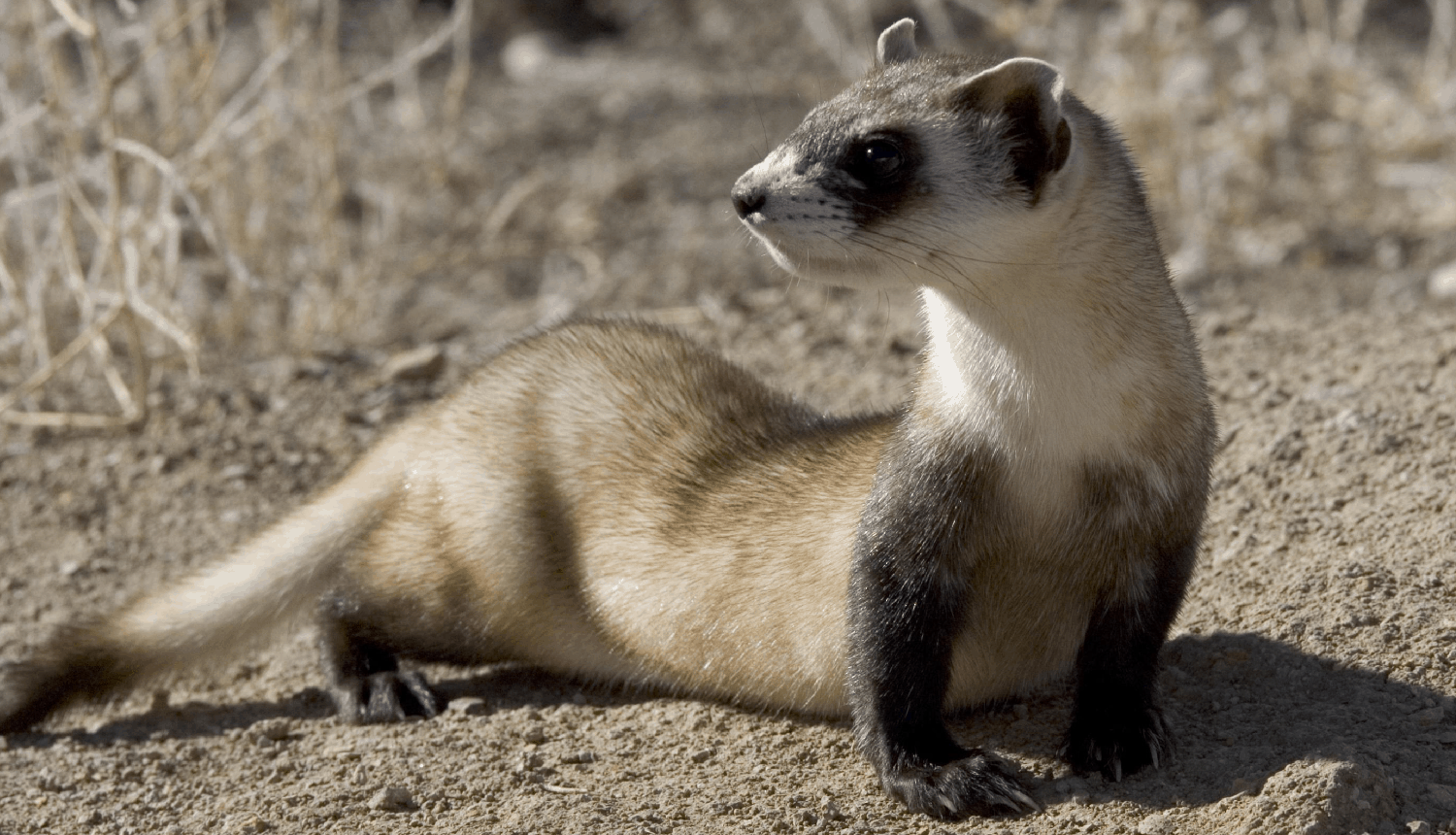Conservation Status
The black-footed ferret is federally listed as endangered.
- The black-footed ferret was first listed as endangered throughout its historic range in 1967 under the Endangered Species Preservation Act—the predecessor to the more robust Endangered Species Act (ESA). Once the ESA was passed in 1973, the species was moved to that list where it remains today.
- The black-footed ferret was listed as an endangered species under the New Mexico Wildlife Conservation Act in 1975, but was removed from this list in 1988 after survey efforts indicated that the species was likely extirpated in the state. Today the species is categorized as a protected furbearer, although no legal harvest has been allowed since the 1960’s.
- In South Dakota the black-footed ferret is a Species of Greatest Conservation Need and is designated as a state listed endangered species.
Project Goals & Objectives
Turner Endangered Species Fund’s (TESF) longstanding goal has been to work with state and federal agencies and other partners in meeting downlisting criteria for the species. The most recent (2013) black-footed ferret recovery plan which includes downlisting. To achieve downlisting or delisting goals, the very specific habitat requirements of ferrets must be met: develop and protect large disease-free prairie dog complexes.
Project Background
Extant black-footed ferret populations, both captive and wild, can all be traced to seven founders captured in Meeteetse, WY and brought into captivity from 1985-1987. Today, the black-footed ferret remains one of the rarest mammals on the planet with an estimated wild population of less than 300 individuals.
TESF’s efforts to assist the U.S. Fish and Wildlife Service in the recovery of black-footed ferrets began in 1998 with the construction of an outdoor preconditioning facility at Vermejo Park Ranch in New Mexico. Naïve, cage reared ferrets were placed into the outdoor pens where they were exposed to as wild an environment as possible, while still being safely maintained in captivity. Ferrets in the outdoor pens lived in black-tailed prairie dog (C. ludovicianus) burrows and were routinely exposed to live prairie dog prey, as they honed their natural predatory instincts and prepared for life in the wild. Female ferrets were bred and soon thereafter whelped and weaned kits in the pens all the while also being exposed to real prairie dog burrows and live prey. Ferrets that were preconditioned or born in outdoor pens and exposed to live prey have been documented to have higher post-release survival rates than those that have not. From 1999-2006 TESF preconditioned 393 ferrets at Vermejo.
From 2005-2007 at Vermejo Park Ranch and 2009-2011 at Bad River Ranches, TESF took the next step in preconditioning ferrets and initiated wild pre-conditioning projects at those ranches. At Vermejo, female ferrets and their kits were released onto a 1,000-acre prairie dog colony enclosed by electric netting which served to keep terrestrial predators–coyotes (Canis latrans) and badgers (Taxidea taxus)–away from the ferrets as they adjusted to life in the wild. At Bad River the same procedures were followed without the use of electric netting. After a one to three months wild pre-conditioning period, the ferrets were captured and transported to permanent release sites. At Vermejo, 48%, and at Bad River 45 % of the ferrets released were recaptured and sent for permanent release elsewhere.
In 2008 TESF began permanent ferret releases on the black-tailed prairie dogs at Vermejo. In 2009 TESF documented the first wild reproduction of ferrets in New Mexico in over 75 years. Over a 5-year period of annual releases, the ferret population at Vermejo fluctuated in response to spring precipitation amounts and the effects the precipitation had on prairie dog populations. The ferret population on the black-tails at Vermejo fluctuated from a high of less than 20 ferrets in 2011 to a low of two ferrets (both males) in 2013.
2012 marked the first year that TESF began ferret releases on the Gunnison’s prairie dogs (C. gunnisoni), which occupy the high elevation mountain meadows of Vermejo. Historical records and preliminary data suggest ferrets should survive better on this species of prairie dog than on black-tails provided sylvatic plague can be managed.

